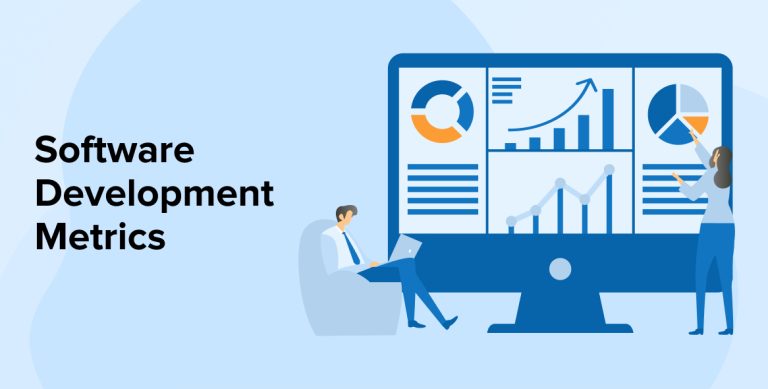
Once the software product is developed with the help of software development metrics we can judge the performance of the developed software product. The following post focuses on the software development metrics considered by reliable software development services providers around. Before we proceed any further, it is very crucial to know why it is crucial to understand software development metrics. Well, it can easily reveal how an application is performing.
Before we proceed any further, it is very crucial to know why it is crucial to understand software development metrics. Well, it can easily reveal software performance and how effective the software teams are in their work, and what factors contribute to that.
1. Introducing Software Development Metrics
As the name implies, software metrics are all about measuring the characteristics of software. Today more and more development companies are found relying on these KPIs to analyze not just the software quality but also what is the software development team performance whether it is progressing or lagging behind.
As the matter of fact, all software-quality metrics are useful and worthy but none of them matters intrinsically. Are you Confused? You see, now many of you have this misconception that traditional source-code metrics are something that enhances consistency while producing quality software. Whereas in reality, it has nothing to do with that and is more dependent on the overall procedure and production environment. And it is equivalently proportional to the value you deliver. Additionally, it helps project managers to gain a better understanding of software performance, quality, software team productivity, and efficiency. There are various software development tools as well for this.
Therefore before picking up the right metrics for business success, it is crucial for one to think considerably and support specific business goals.
1.1 Types of Software Development Metrics
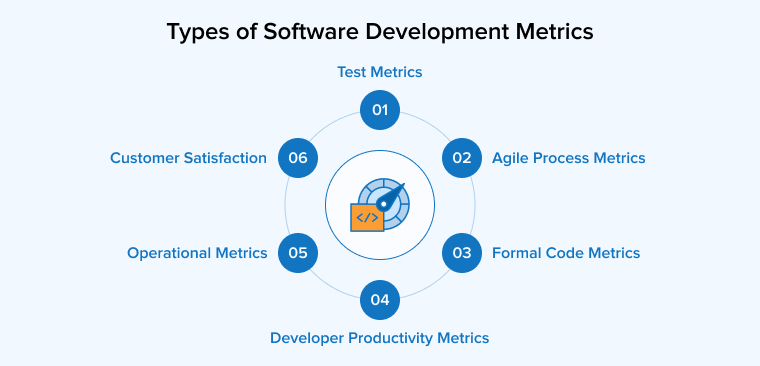
Before we delve into the types, let us understand software metrics classifications:
Product Metrics -Metrics that successfully measure various characteristics such as size and complexity, quality and reliability of the software product are product metrics.
Process Metrics – As the name implies, these software metrics tend to measure the process and its different attributes. For example, if any fault has been detected, the following metrics will assist in determining its efficiency so that all services provided by the software development company turn out to be accurate.
- Internal metrics – Mainly used for measuring properties, For example, Lines of Code (LOC) measure.
- External Metrics – These metrics are used for measuring properties, e.g., portability, reliability, functionality, usability, etc.
- Hybrid Metrics – These metrics are delivered by combining a product, development process, and resource metrics. For example, cost per FP where FP stands for Function Point Metric.
- Project Metrics – Project metrics are the agile software development metrics to check the project’s progress. A wide range of data in regards to time and cost is gathered as used to establish the fundamentals of the new software. By doing this, the project quality can be improved, you will be able to ace when it comes to shipping quality software features and functionalities. Also, the number of errors and time and cost can be reduced.
2. Software Development Metrics
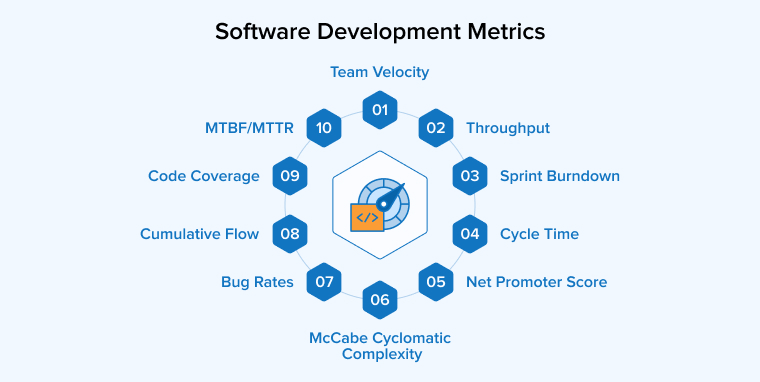
Find out high-end software development metrics to keep in mind. These metrics can be used to track and measure quality.
2.1 Team Velocity
Team Velocity is such a software development metric that is capable of measuring the productivity of several story points. The metric also assists in judging a product in quantity. . By using the Team Velocity metric, one can easily understand the worth of the team offered to the end-user in a specific time.
For instance, if the team completes 15 or 20 story points in even the last three sprints. And you get 16 as the average velocity.. Now many of you have this misconception that velocity is measuring how much you have succeeded. Which is not true!
2.2 Throughput
Throughput is one of the leading agile metrics mainly used to track the exact number of tasks accomplished during a sprint. Once the result is achieved just ensure to align it with the current business goals in real-time Measuring Throughput metric assists in:
- Detecting whenever the team is blocked
- Learning if the team is overloaded. This can be done by comparing the average throughput with the current workload.
2.3 Sprint Burndown
Another astounding set of developer productivity metrics includes Sprint Burndown. It does not just perform automated tests but also offers a detailed report. The goal of the team is to deliver all work.
So what happens when we choose such kinds of team key metrics?
- Early sprint can signify a lack of scheduled work for one product
- In case sprint deadlines are missed, you might be overloaded with work to fill the gap.
- When submitting a report just ensure to feature a steep reduction in “remaining values”,. Many of you are seen creating a dramatic drop. It’s not a good sign and indicates that work was not assigned appropriately.
2.4 Cycle Time
Another popular software development ultimate metric is cycle time. The ultimate objective of using the cycle time metric is to be able to determine when you will be able to deliver the product among end-users featuring the latest functionalities. The metric definitely helps you in speeding up! Besides, you can even find out certain weak points that might hinder the overall performance of a software system sooner or later.
2.5 Net Promoter Score: Measuring Customer Satisfaction
Net Promoter Score (NPS) including, Customer Effort Score (CES) and Customer Satisfaction Score (CSAT) are other popular metrics to measure customer experience and satisfaction. So what could be the score of customer experience? it might be somewhere between -100 to +100.
In case, if you get the lowest score which is -100, it means bad news no body is spreading the word for you and, +100 represents all of your customers are happily advertising for you. Other popular examples of Customer satisfaction metrics are Customer Effort Score (CES) and Customer Satisfaction Score (CSAT).
For example, you get as many as 100 responses in the Net Promoter Score survey with 20 responses between 0-6 brackets, 20 responses are between 7-8 brackets, and the rest of the 60 responses are in the bracket of 9-10.
2.6 MTBF – Mean Time Between Failures/MTTR – Mean Time Between Failures & Mean Time To Repair
MTTR is one of the best performance metrics that have the potential to repair a security breach. Now every software development process has a chance of getting a bug, and it is your responsibility to provide a solution for them.
With everybody hushing around, software development has to be quick and accurate. The metric helps in fixing security issues. While you are deploying the software, the metric detects mistakes so that you can work simultaneously.
In an ideal condition, you are expected to offer a quick fix solution, as more often than not, the software is in its production stage. MTTR is also used to determine the Software Testing Trends of the modern era.
The mean time to repair (MTTR) metric measures the time period you are taking in order to deploy the fixes for a security breach for the software. The less time you take, the better result you expect in the long run.
For example, if you have spent a total of 100 hours on unplanned maintenance and during that 10 times failure has occurred, then MTTR would be 10 for this particular case.
2.7 Bug Rates
This is a metric mainly used to track the number of bugs generated as new features are deployed. A developer team may release a product or an update quickly, but it is good for nothing if the code is bug-ridden.
Bug Rates Metric is one such name that assists you in determining whether a product is of value or not. Now bugs can be the severity of the bug, or the number of bugs. A team can record the number of bugs shipped during each sprint and set a limit for acceptable bugs. Also, the severity of bugs should not be in the range of Medium to High.
2.8 Cumulative Flow: Tracking The State Of Various Tasks
This software development metric primarily focuses on software tasks. All this is done by employing a visual diagram.
The diagram comprises different colors representing a variety of stages such as ‘Approved’. ‘In Progress’, ‘Backlog’, and more. Technically speaking all these colors are arranged in bands with the width of the band correlating to cycle time.
In a nutshell, choosing cumulative flow as your software development metric can successfully stabilize your workflow or identify bottlenecks in a short period of time.
2.9 Code Coverage
Often software development teams tend to choose Code Coverage especially when it comes to measuring code quality. Now, this is critical for software development life cycles as it surely leads to continuous software delivery and test-driven development.
Code Coverage often known as code coverage is a metric that determines how much of your source code is executed. You must have observed that sometimes the code doesn’t execute well as expected due to undetected bugs.
Aiming for 100% code coverage is something software engineers shouldn’t be aiming for. But it’s like the higher the better as you don’t require to put much effort into debugging.
2.10 McCabe Cyclomatic Complexity: Indicating Complexity Of Code
As the name implies, this metric does indicate code complexity, especially during code testing and maintenance. Unlike the above-mentioned software development metric, the higher the code’s complexity results in making the entire process more difficult to conduct. All you have to do is ensure that it works well.
Fortunately, you may come across a plethora of MCC measurement tools.
3. How can they Enhance your Business Value? Benefits and Advantages
Tracking software quality metrics assists the management to enhance the productivity of software development procedures. Furthermore, there are other advantages of software metrics:-
- Metrics provide objective information.
- Software development teams can prep themselves up by using these software metrics.
- These metrics can be used to anticipate problems and avoid a reactive, fix \on fail approach.
- With the aid of software metrics, augmentation is possible. The professionals are asked to prioritize issues and solve them accordingly.
- Project software development metrics successfully facilitate a proactive management strategy. By doing this, what happens is current and potential issues can be resolved in or before the right period of right before time.
- Decision-makers make use of Software development metrics to assess the impacts and make informed trade-offs This is how software project objectives can be attained.
Not all metrics matter for all software development projects. What matters the most is the success metrics. And for that, it is advisable to use several specific and objective measurements, in combination, to answer real business questions. The goal is to determine what value you want to deliver.
4. Key Takeaways
So that’s all for now! By choosing the right development metrics in software engineering, business leaders can avail themselves of benefits like:-
- Increase ROI
- Enhances chances of improvement
- Manage workloads
- Reduce Overtime and cost


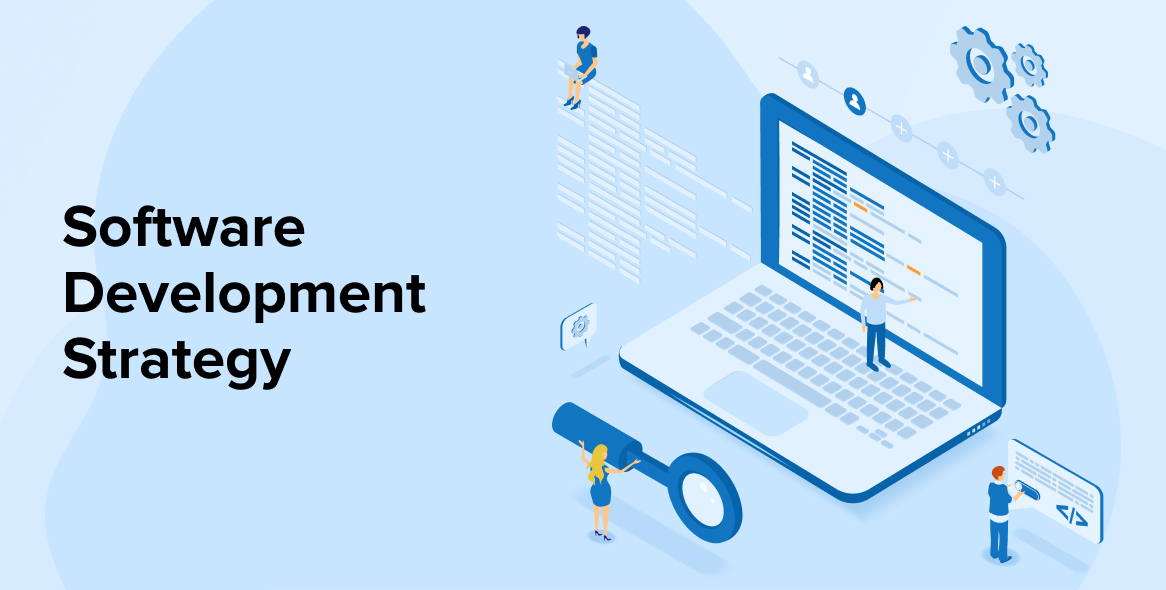
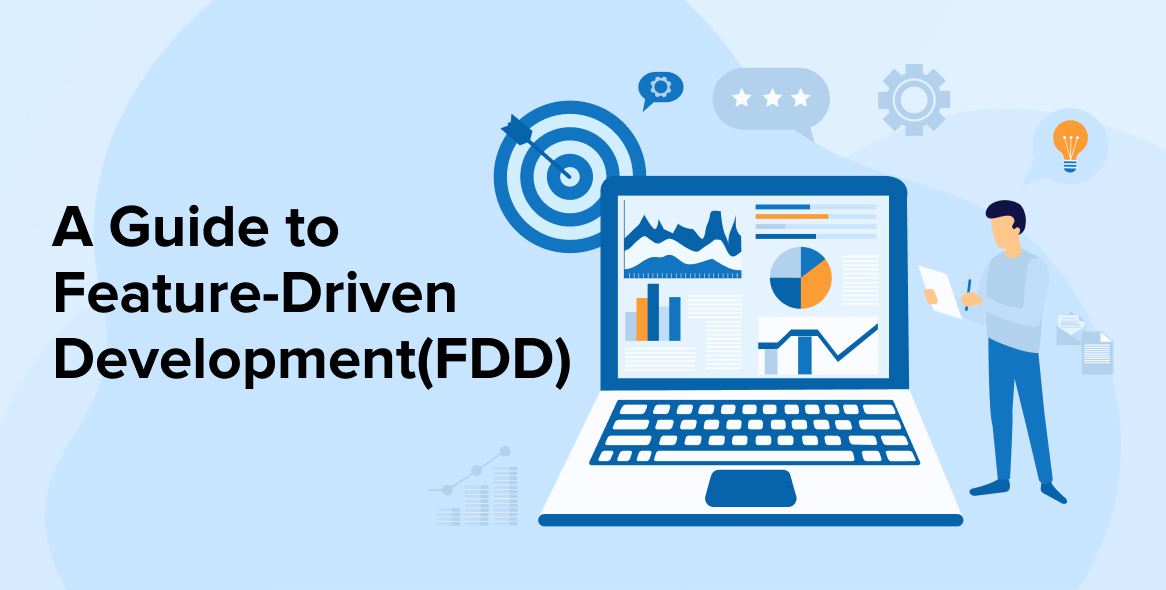


Comments
Leave a message...